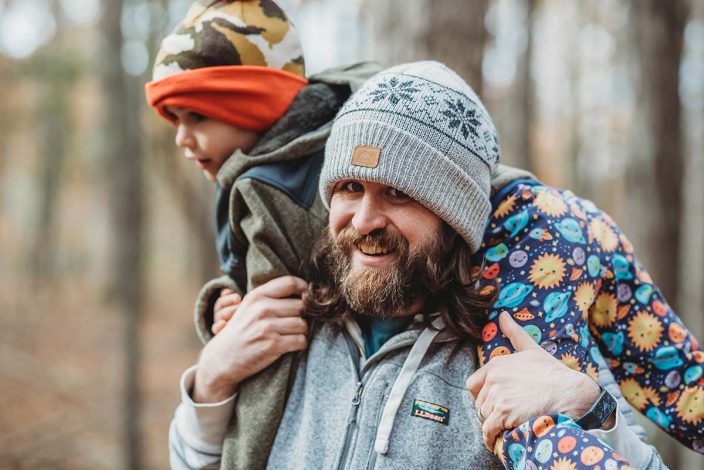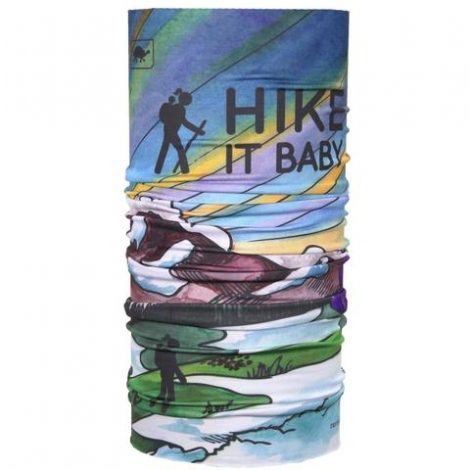Great Companies Giving Back: Turtle Fur and #ProjectWarmth
- Blog Great Companies Giving Back: Turtle Fur and #ProjectWarmth
Here at Hike it Baby, it’s no secret that we love the outdoors. We feel everyone should have the opportunity to enjoy and feel comfortable outside, no matter what Mother Nature has in store. Unfortunately, keeping warm when temperatures drop isn’t always easy. Effective cold-weather gear can come at a hefty price. That’s why we are so excited to share Turtle Fur’s Project Warmth, a program that is near and dear to our hearts from one of our amazing sponsors. 
What is Project Warmth?
Born from a desire to give back to those in need within their community, Turtle Fur created the Project Warmth Initiative in 2008. When they found themselves with excess inventory and samples, they would run an annual factory sale for their community. In conjunction with the sale, they would reach out to local schools, homeless shelters, and community centers in and around their home base of Morrisville, Vermont, to see if there was a need for cold-weather hats and accessories. The need was there, and each year they expanded their reach to provide cold-weather hats and accessories to more areas. While this initiative started as a way to give back to Turtle Fur’s local community, they wanted to grow the program, which is when #projectwarmth was born on social media. The program has grown successfully and Turtle Fur is now manufacturing products specifically to donate rather than relying on only overruns, samples, etc.
“Project warmth started in our community where we saw a need and an opportunity to give back. Because the response was so well received locally, taking care of our home state of Vermont became a priority, then all of New England, and from there it grew to a national program.” Josh Pombar, Director of Marketing, Turtle Fur
How it Works
If a customer posts a selfie wearing Turtle Fur product on social media, tags them, and includes the hashtag #projectwarmth, a Turtle Fur product is donated. They wanted to get their retailers involved as well, so if a retailer is mentioned (tagged) - they double the donation and donate two items! Just follow these steps:
- Take a photo wearing your new Turtle Fur product, like the Hike it Baby inspired tube
- Include the following in your post: @turtlefur and the hashtag #projectwarmth
- Tag the store you bought it from (for example @outdoorretailer) for double the donation!
- Share on any or all of your social media platforms
BONUS: Tag @hikeitbaby and Turtle Fur will double the donation! Voila, it’s that simple! 
Who gets the product?
To date, Turtle Fur has donated over 100,000 pieces of cold-weather accessories to over 140 organizations. These organizations include shelters, schools, and hospitals. A full list of organizations can be found here. As the initiative gains strength, one of the main goals is to donate to locations in all 50 states, but they need our help. Do you know of an organization that serves people in need of cold-weather accessories? You can submit a quick form with their information here. One incredible detail that sets Turtle Fur and Project Warmth apart from other retailers is that they don’t donate their product blindly. They contact each organization to discuss how they can customize their order. They personalize their shipments based on the number of people in need, the gender, age of the recipients, and any other important demographics. Organizations don’t just receive a random “box of hats,” they are getting hand-picked accessories that will make a true difference in the lives of people that need them most.
Looking to the Future
Turtle Fur has a donation goal of 40,000 pieces for 2020. They also plan to run campaigns and use their reps to identify areas of need across the United States. You can help by both utilizing the #projectwarmth hashtag and filling out the donation form to suggest a donation recipient. Hike it Baby is proud to have Turtle Fur as one of our partners. Learn more about the partners that support Hike it Baby's mission to connect families with young children to the outdoors and each other.
About Hike it Baby
Hike it Baby is a 501(c)(3) non-profit organization dedicated to getting families outdoors and on trails across the U.S. and internationally, supporting, educating and inspiring families through their more than 300 communities across North America. Since its grassroots inception in 2013 in Portland, Oregon, Hike it Baby is now a growing community of 270,000 families and 500 volunteer branch ambassadors hosting more than 1,600 hikes per month. More information, as well as daily hike schedules, can be found at HikeitBaby.com, Facebook, YouTube, Pinterest, and Instagram. Photo courtesy of Amy Diebold.
Related Content




Comments